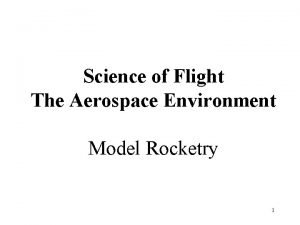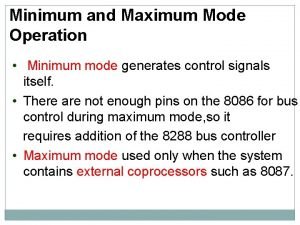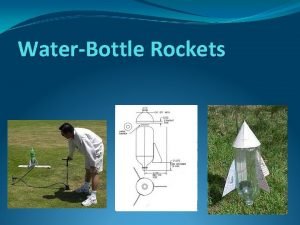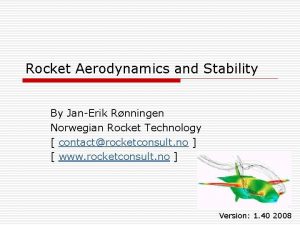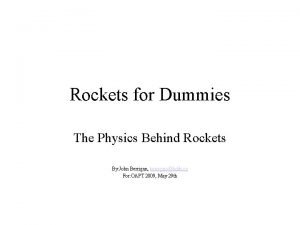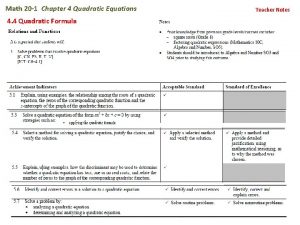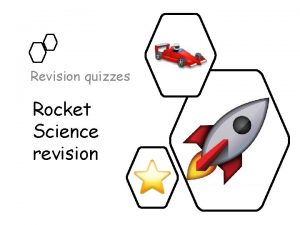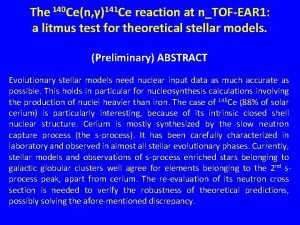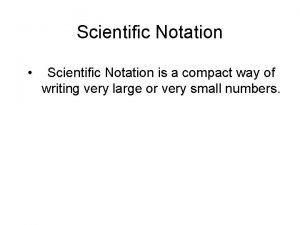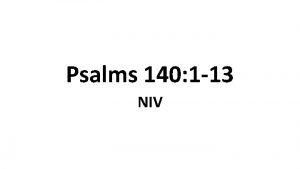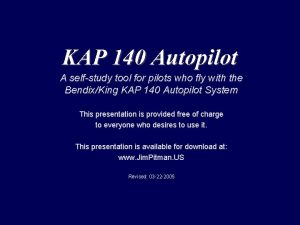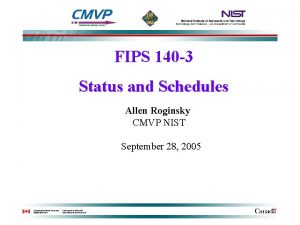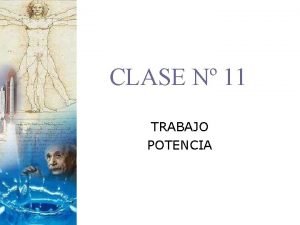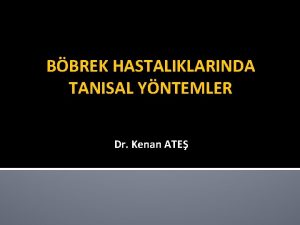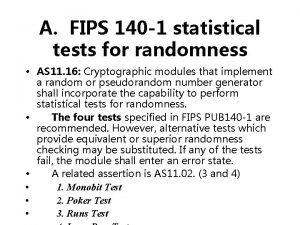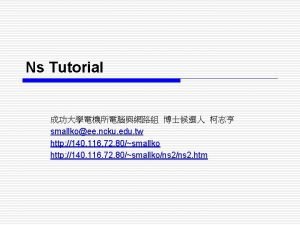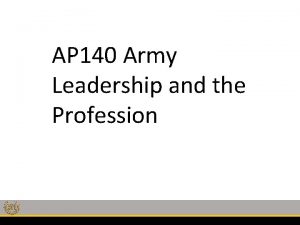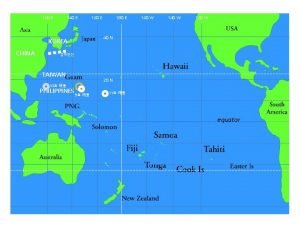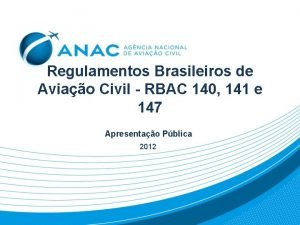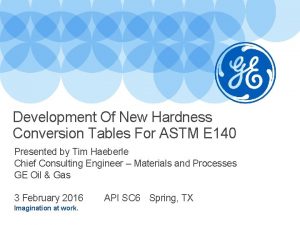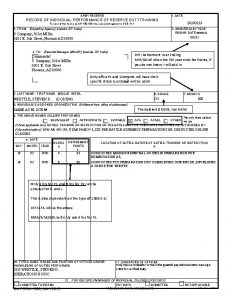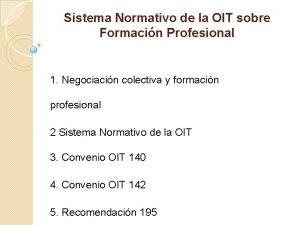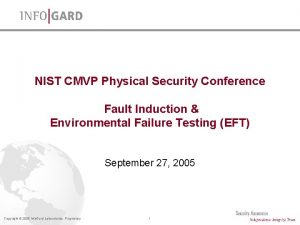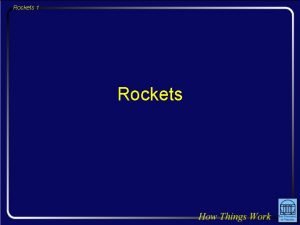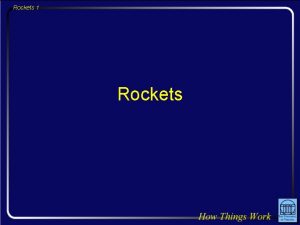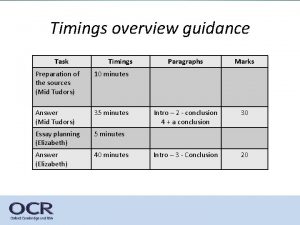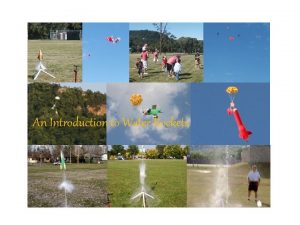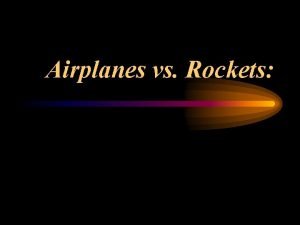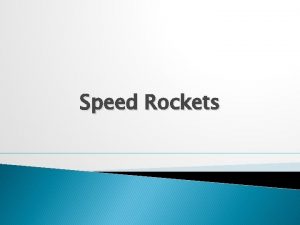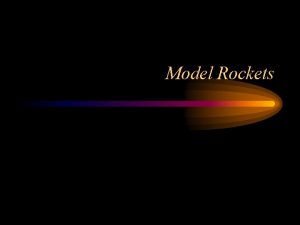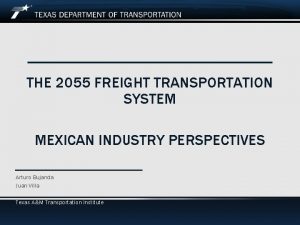MODEL ROCKETS M 140 01 Timings 1910 2055






























































- Slides: 62

MODEL ROCKETS M 140. 01 Timings: 1910 2055 hrs Instructor 2 Lt Barry Baxtrom Ref: Power. Point, Lecture, Visual Quiz, Oral Quiz, Outside activity (if behaviour and weather permit)

• • • • MODEL ROCKETS VS REAL ROCKETS FORCES MODEL ROCKET PARTS RECOVERY SYSTEMS MODEL ROCKET ENGINES IGNITERS LAUNCH PADS STARTERS MODEL ROCKET FLIGHT STABILITY OF A MODEL SAFETY LAWS BUILDING A MODEL ROCKET – PLANNING – BUILDING • YOUR ROCKET • REFERENCES

MODEL ROCKETS VS REAL ROCKETS


FORCES





Rocket Roll Motion

Rocket Pitch Motion


MODEL ROCKET PARTS



RECOVERY SYSTEMS

PARACHUTE RECOVERY The parachute is a common recovery device. At the peak of the rocket's flight, the engine's ejection charge ejects the nose cone off the body tube and pushes out the plastic parachute. The parachute then opens and allows the rocket to gently land on the ground. In many cases, cutting a small hole in the middle of the parachute allows the rocket to come down quickly. On windy days, the parachute may carry the rocket away from its landing area.

STREAMER RECOVERY The streamer is a good recovery device for rockets that weigh less than the parachute. The engine's ejection charge ejects a long narrow strip of crepe paper or plastic streamer which flaps against the wind slowing the rocket down during its descent

ROTOR RECOVERY The rotor recovery is a rare, yet fascinating recovery device. In a rotor recovery, after the rotor reaches its peak, the engine's ejection charge begins a spinning motion in the rocket which allows the rocket to descend to the ground like a helicopter

GLIDER RECOVERY The glider is usually boosted into the air attached to a rocket. At the peak of the rocket's flight, the glider disconnects from the rocket and glides back to the ground. Meanwhile, the carrier rocket or boost pod is usually recovered by a parachute.

TUMBLE RECOVERY The tumble recovery device is a unique recovery system in which the engine's ejection charge shifts the position of the rocket allowing it to tumble gently to the ground. This recovery device is often used with very lightweight rockets.

MODEL ROCKET ENGINES





IGNITERS



LAUNCH PADS


STARTERS


MODEL ROCKET FLIGHT

Launch Site Layout 1) Tracker 1 2) Tracker 2 3) Range Safety Officer 4) Data Recording Table 5) Preparation Table 6) Recovery Team 7) Launch Control Officer 8) National or Club Flag 9) Range In Operation Pennant (optional) 10)Student Observers 11)Parking Area (optional) 12)Launching Pad



STABILITY OF MODEL



SAFETY


Model Rocketry Safety Code • • Model Rocketry Safety Code Materials My model rocket will be made of lightweight materials such as paper, wood, rubber, and plastic suitable for the power used and the performance of my model rocket. I will not use any metal for the nose cone, body, or fins of a model rocket. Motors/Engines I will use only commercially made NAR certified model rocket engines in the manner recommended by the manufacturer. I will not alter the model rocket engine, its parts, or its ingredients in any way. Recovery I will always use a recovery system in my model rocket that will return it safely to the ground so it may be flown again. I will use only flame resistant recovery wadding if required. Weight and Power Limits My model rocket will weigh no more than 1500 grams (53 oz. ) at lift off, and its rocket engines will produce no more than 320 Newton seconds (4. 45 Newtons equal 1. 0 pound) of total impulse. My model rocket will weigh no more than the engine manufacturer’s recommended maximum lift off weight for the engines used, or I will use engines recommended by the manufacturer for my model rocket. Stability I will check the stability of my model rocket before its first flight, except when launching a model rocket of already proven stability. Payloads Except for insects, my model rocket will never carry live animals or a payload that is intended to be flammable, explosive, or harmful. Launch Site I will launch my model rocket outdoors in a cleared area, free of tall trees, power lines, buildings, and dry brush and grass. My launch site will be at least as large as that recommended in the following table.

Model Rocketry Safety Code LAUNCH SITE DIMENSIONS Minimum Installed Total Impulse (Newton seconds) Equivalent Engine Type Site Dimension (feet) (meters) 0. 00 1. 25 1/4 A & 1/2 A 50 15 1. 26 2. 50 A 100 30 2. 51 5. 00 B 200 60 5. 01 10. 00 C 400 120 10. 01 20. 00 D 500 150 20. 01 40. 00 E 1000 300 40. 01 80. 00 F 1000 300 80. 01 160. 00 G 1000 300 160. 01 320. 00 2 Gs 1500 450

Model Rocketry Safety Code • • Launcher I will launch my model rocket from a stable launching device that provides rigid guidance until the model rocket has reached a speed adequate to ensure a safe flight path. To prevent accidental eye injury, I will always place the launcher so that the end of the rod is above eye level or I will cap the end of the launch rod when approaching it. I will cap or disassemble my launch rod when not in use and I will never store it in an upright position. My launcher will have a jet deflector device to prevent the engine exhaust from hitting the ground directly. I will always clear the area around my launch device of brown grass, dry weeds, and other easy to burn materials. Ignition System The system I use to launch my model rocket will be remotely controlled and electrically operated. It will contain a launching switch that will return to “off” when released. The system will contain a removable safety interlock in series with the launch switch. All persons will remain at least 15 feet (5 meters) from the model rocket when I am igniting model rocket engines totalling 30 Newton seconds or less of total impulse and at least 30 feet (9 meters) from the model rocket when I am igniting model rocket engines totalling more than 30 Newton seconds of total impulse. I will use only electrical igniters recommended by the engine manufacturer that will ignite model rocket engine(s) within one second of actuation of the launching switch. Launch Safety I will ensure that people in the launch area are aware of the pending model rocket launch and can see the model rocket’s liftoff before I begin my audible five second countdown. I will not launch a model rocket using it as a weapon. If my model rocket suffers a misfire, I will not allow anyone to approach it or the launcher until I have made certain that the safety interlock has been removed or that the battery has been disconnected from the ignition system. I will wait one minute after a misfire before allowing anyone to approach the launcher. Flying Conditions I will launch my model rocket only when the wind is less than 20 miles (30 kilometers) an hour. I will not launch my model rocket so it flies into clouds, near aircraft in flight, or in a manner that is hazardous to people or property.

Model Rocketry Safety Code • • Pre-Launch Test When conducting research activities with unproven model rocket designs or methods I will, when possible, determine the reliability of my model rocket by pre launch tests. I will conduct the launching of an unproven design in complete isolation from persons not participating in the actual launching. Launch Angle My launch device will be pointed within 30 degrees of vertical. I will never use model rocket engines to propel any device horizontally. Recovery Hazards If a model rocket becomes entangled in a power line or other dangerous place, I will not attempt to retrieve it. As a member of the Estes Model Rocketry Program, I promise to faithfully follow all rules of safe conduct as established in the above code. Signature_____________________ *This is the official Model Rocketry Safety Code of the National Association of Rocketry and the Model Rocket Manufacturers Association. Important Note: “G” engines must be sold to and used by adults (18 and up) only. To launch large model rockets weighing more than one lb. (453 g) but no more than 3. 3 lbs. (1500 g) including propellant or rockets containing more than 4 oz. (113 g) but no more than 4. 4 oz. (125 g) of propellant (net weight), you must notify and perhaps obtain authorization from the Federal Aviation Administration (FAA). Check your telephone directory for the FAA office nearest you or contact Estes Industries for further information.

LAWS

In Canada, all model rocketry is governed by Transport Canada through the Canadian Aeronautical Regulations, Sections 101. 07 Subsection 1 and 602. 43 through. 45. No licenses or permits are required to participate in model rocketry. Motors are regulated by the Explosives Regulatory Division, of Natural Resources Canada through the Explosives Act. One must be at least 12 years of age to purchase and use model rocket engines without adult supervision. The Canadian Model Rocketry Safety Code should be followed. Care must be taken when flying anywhere there is air traffic, such as near airports. The current version of the Control of Model Rocketry in Canada can be ordered for free online at the publications page at: http: //www. nrcan. gc. ca/mms/explosif For more information on Canadian Model Rocketry contact: Canadian Launch Safety Office P. O. Box 8550 344 Edmonton Street Winnipeg, Manitoba R 3 C 0 P 6 Phone (204) 984 7243/7286 Fax (204) 983 2005 Email: clso@tc. gc. ca For more information about model rocketry motors in Canada, contact: Natural Resources Canada Explosives Division Sir William Logan Building 580 Booth Street 15 th Floor Ottawa, Ontario Canada K 1 A 0 E 4 Phone (613) 995 8995 Fax (613) 995 0480 Email: Dave. Mc. Culloch@cc 2 smtp. nrcan. gc. ca

The Canadian Association of Rocketry is the national organization of modelers and rocketry clubs in Canada. The CAR deals with all levels of hobby rocketry from model up to High Power. The organization acts as legislative advisors to the Canadian government as well as organizing many launches and competitions. The association also has liability insurance for its members. You can contact CAR headquarters at: Canadian Association of Rocketry 12332, 89 Street Edmonton, Alberta T 5 B 3 W 8 Email: vemc@planet. eon. net The Canadian Model Rocketry Safety Code is on their web site at http: //www. promotek. com/car/index. htm

BUILDING A MODEL ROCKET

PLANNING


BUILDING


YOUR ROCKET

ESTES VIKING • Length 12. 1 in. (30. 7 cm) • Diameter 0. 74 in. (18. 8 mm) • Weight 0. 6 oz. (17 g) • Die Cut Card Stock Fins • Self Stick Decals • Streamer Recovery Recommended Engines • 1/2 A 6 2 • A 8 3 • A 8 5 Max Altitude: 1698 ft. (518 m)

The Estes Viking is one fantastic research rocket with 48 possible different fin configurations! This kit gives you five special die cut card stock fins that allow you to create a rocket that's a truly unique rocket of your own design! Take your pick on how you want your rocket to look; fins up, fins down or fins whatever way. You call it, it's your day to be the rocket designer! Customize your own rocket. . . no matter how you place the fins, it still offers the ultimate in high performance model rocket flight! This Skill Level 1 rocket kit includes a single piece body tube, moulded nose cone and self stick decals. This rocket is just over 12 inches (25. 4 cm) tall. When flown on standard engines, the Viking is able to reach amazing launch heights over 1650 feet (503 m) and land safely with its bright orange streamer. The versatile Viking can be built in an afternoon. It's a great high altitude rocket for beginners, class projects, clubs and rocket demonstrations. Building tools, finishing supplies, Estes engines, and launch supplies required sold separately. Recommended for ages 10 and up with adult supervision for those under 12.

WHAT YOU’LL NEED… • • • Wood Glue Fine sandpaper Ruler Pencil String Masking Tape or Cellophane Tape Primer Paint Cutting tool (Razor type knife) (ask parents for help) • IMAGINATION !!! • PATIENCE !!!

PRIZES ! MOST UNIQUE DESIGN BEST FLIGHT PARTICIPATION CERTIFICATES

REFERENCES

http: //exploration. grc. nasa. gov/education/rocket/shortr. html http: //www. esteseducator. com/ http: //www. questaerospace. com/

THANK YOU !! • 2 Lt Barry Baxtrom (289) 404 2297
 Psy 2055
Psy 2055 Psy 2055
Psy 2055 Psy2055
Psy2055 Nose cone rocket
Nose cone rocket Minimum and maximum mode of 8086
Minimum and maximum mode of 8086 Nitnem time table
Nitnem time table Unseen poetry timings
Unseen poetry timings Tami oliphant
Tami oliphant English language paper 1 timings
English language paper 1 timings Fins for rockets
Fins for rockets Newton's third law
Newton's third law Aerodynamics of rockets
Aerodynamics of rockets Red rockets and rainbow jelly activities
Red rockets and rainbow jelly activities Newtons 3 rd law
Newtons 3 rd law Johnny rockets fresno
Johnny rockets fresno Specific impulse
Specific impulse Tree rockets
Tree rockets Math 20-1 quadratic equations test
Math 20-1 quadratic equations test Quiz
Quiz Roaring rockets powerpoint
Roaring rockets powerpoint Brief history of rockets
Brief history of rockets 200 37 si kaçtır
200 37 si kaçtır Iq level chart
Iq level chart Fips 140-4
Fips 140-4 Ce-140
Ce-140 7x10x10x10
7x10x10x10 Psalms 140 niv
Psalms 140 niv Pergub 140 tahun 2011
Pergub 140 tahun 2011 Ile osób o rozpiętości ramion równej 140 cm
Ile osób o rozpiętości ramion równej 140 cm Kap 140 autopilot ils approach
Kap 140 autopilot ils approach Strong emotions can interfere with your ability to
Strong emotions can interfere with your ability to Fips 140 3
Fips 140 3 Cse 140
Cse 140 Encoder definition
Encoder definition What does 5'2 140 lbs look like
What does 5'2 140 lbs look like Un niño camina junto a su hermano en bicicleta
Un niño camina junto a su hermano en bicicleta Cit 140
Cit 140 Mcb 140
Mcb 140 Querkraftverlauf momentenverlauf
Querkraftverlauf momentenverlauf Kreatin klirensi hesaplama formülü
Kreatin klirensi hesaplama formülü Eric wehrli
Eric wehrli Scale out master
Scale out master Http://140
Http://140 5 ilcs 140/7
5 ilcs 140/7 Cse 140
Cse 140 Cse 140
Cse 140 Army ethical lenses
Army ethical lenses 40 n 140 e
40 n 140 e Rbac 175 emenda 03
Rbac 175 emenda 03 Astm hardness conversion
Astm hardness conversion Décomposer 210 en produit de facteurs premiers
Décomposer 210 en produit de facteurs premiers Da form 1380 example
Da form 1380 example From 12 to 140 ghz
From 12 to 140 ghz Proving lines parallel proofs
Proving lines parallel proofs 157+48
157+48 Verizon 140 west street
Verizon 140 west street Mcb 140
Mcb 140 Convenio 142 oit
Convenio 142 oit Github liviu cotfas
Github liviu cotfas 14 line sonnet
14 line sonnet 1400000/120
1400000/120 Contoh diagram batang mendatar
Contoh diagram batang mendatar Nist physical security
Nist physical security



